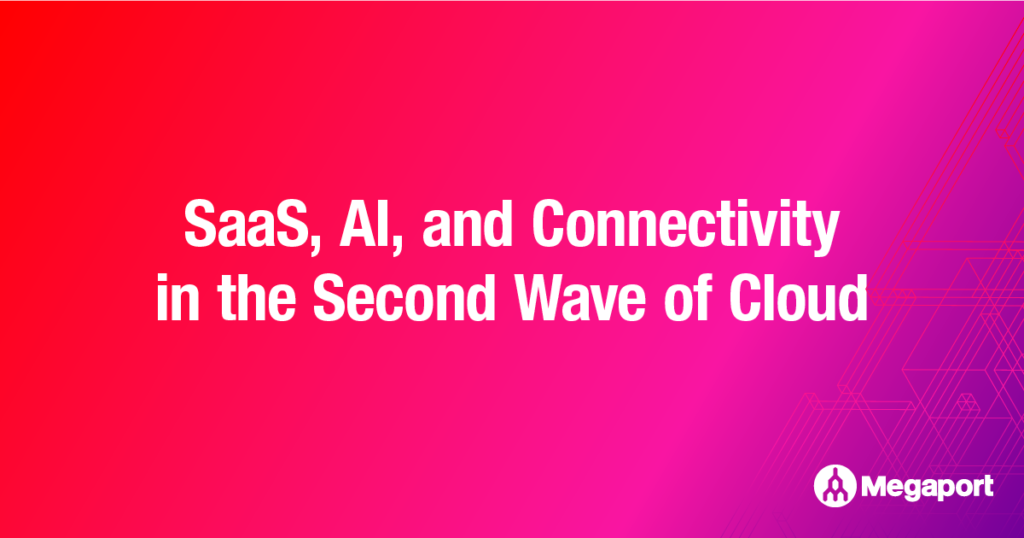
How to Build Resilient Networks for AI Production Workloads
By Kevin Dresser, Solutions Architect
Production AI needs a network that can keep up. Learn why private, scalable connectivity is the key in our webinar recap with Vultr.
AI is no longer a proof-of-concept hiding in a developer lab. It’s a full-fledged production workload, and it’s hungry for data.
But as enterprises move their AI strategies from theory to reality, they’re hitting a wall that isn’t about algorithms or processing power – it’s about the network.
In a recent webinar, experts from Megaport and Vultr came together to discuss one of the most significant, yet often overlooked, challenges in the AI landscape: building a network that can keep up with your growing AI needs.
About Vultr
Vultr is a global cloud infrastructure provider with 32 data centers across six continents, offering proximity to 90% of the world’s population in under 40 milliseconds. It provides a broad suite of services including high-performance AI and GPU compute, x86 virtualized and bare metal servers, managed Kubernetes and databases, and robust storage solutions.
Vultr supports complex, compliance-heavy workloads (HIPAA, SOC, ISO, etc.) and enables scalable, low-latency AI deployments through partnerships with leading companies like Megaport for agile, private networking.
The networking problem with AI
From customer support automation and code generation to generative content and predictive maintenance, AI workloads are all different. And they all need to access huge datasets that can be scattered across multiple locations including on-premises data centers, colocation facilities, and various clouds.
Trying to feed these powerful GPU clusters over the public internet just doesn’t cut it. It’s often too slow, too risky, and too unreliable for the demands of production AI.
The conversation that needs to be had isn’t about the internal fabric of a GPU cluster itself, but rather the sprawling network that connects all the disparate data sources to that cluster. This is the network that feeds the beast, and it’s also the network that allows users to actually consume the AI applications once they’re running.
From pilot to production: the connectivity journey
Many organizations start their AI journey with a simple setup, maybe connecting a single data source to a Vultr GPU instance over the public internet. This works for a proof-of-concept, but it’s a solution that quickly shows its cracks.
As you scale, moving from a small test to a full departmental rollout or bringing in data from multiple clouds, the complexity skyrockets.
What starts as a manageable single connection quickly turns into a tangled web of endpoints to secure and manage. The costs also start to climb; moving 10 terabytes of data might be a manageable expense, but when you scale to 100 or even 500 terabytes (which isn’t a huge amount of data these days), the bandwidth costs can become a serious barrier to progress.
As you incorporate more AI workloads into your network, it becomes clear that the public internet isn’t a viable long-term strategy.
Building a network that works for AI
What does a production-ready AI network actually look like?
It comes down to a few key principles:
- Private, dedicated connectivity: The first step is to get off the public internet. Private connectivity, like that offered by Megaport, provides a direct, dedicated path for your data. This immediately helps improve security and provides the kind of predictable, low-latency performance that AI workloads demand.
- Scalability and agility: AI needs aren’t static, and it’s not uncommon for teams to need to burst their bandwidth for weeks, days, or even hours to handle large transfers or model training. A Network as a Service (NaaS) platform allows you to flex your bandwidth up and down on demand so you can spin up new connections in minutes and only pay for what you need, when you need it.
- Global reach: Your data lives everywhere, and so should your network. Having a network provider with a global footprint means you can strategically connect to your data sources and GPU compute resources, like those from Vultr, wherever they are in the world. This proximity is key to keeping latency low and performance high.
A real-world example: medical imaging
Consider the world of healthcare and medical imaging. Medical images are large files that doctors need to access quickly and reliably, often comparing them to historical images stored in different systems. This data might be generated at a clinical site, stored in a private cloud, and accessed through an electronic medical records platform hosted in a hyperscaler.
A private, scalable network allows a healthcare provider to build a secure data pipeline. They can connect their on-site data center directly to a Vultr cloud region for AI-powered analysis while also providing secure access for remote clinical staff.
If they expand to a new region, they can also use a virtual network presence to instantly extend their fabric, connecting to another Vultr instance or other cloud providers on the opposite coast without deploying new hardware.
Making it happen
The best part is that building this kind of sophisticated network is a simple task, with users able to provision connections through a simple portal or via automation tools like Terraform.
Get started by creating a Megaport Virtual Cross Connect (VXC) to link your physical data center to a Vultr region, simply adjusting the bandwidth in real-time as your needs change. And if you need to connect to another business that’s also on the Megaport network, you can simply generate a service key to establish a secure, private connection between your two environments.
The era of production AI is here, and the question is no longer if you need a powerful network, but how quickly you can build one.





